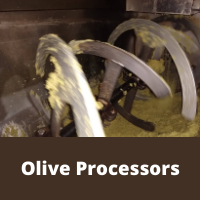Scientists are designing and testing new compounds that can reduce evaporation loss from large dam surfaces by up to 40% and save Australia millions of dollars.
A thin liquid coating called a monolayer that limits the escape of water vapour may be a big water-saving solution for farm dams and urban water storages.
The Cooperative Research Centre for Irrigation Futures (CRCIF) is evaluating several types of commercial monolayers (a thin liquid coating that limits the escape of water vapour)) in New South Wales and Queensland. Initial results show monolayer technology is cost-effective compared to other evaporation control methods.
The spray-on mixture spreads quickly over water surfaces, forms an environmentally-friendly protective layer, and can reduce evaporation loss by up to 40%.
Severely depleted water storages across southern Australia are even more vulnerable to evaporation loss due to shallow water levels and large surface areas. Monolayer technology, if widely adopted, could help save what water we have over the coming hot, dry summer.
Fast-spreading monolayers are easy to apply and more affordable than other types of evaporation controls, such as floating covers or shade cloth, according to CRC IF researcher Erik Schmidt of the University of Southern Queensland.
“While plastic covers are suitable for small dams up to five hectares in size, really large dams need another solution, such as monolayers,” said Schmidt.
Evaporation loss from Australia’s two million farm dams is estimated at 1,320,000 megalitres – 2.6 times the capacity of Sydney Harbour – every year. With dams and large metropolitan water storages losing such vast amounts, the technology could be a Godsend to farmers, irrigators and water supply managers across Australia.
“Evaporation is a serious problem,” Ian Atkinson, chief executive officer of the CRCIF, said.
“For every 10 centimetres of water lost by evaporation from a one-hectare dam surface, you lose one million litres of water.
“We need better storage systems. Good dam design and well-positioned windbreaks help, but ultimately we need a durable, affordable and environmentally-friendly product that protects water storages from the ravages of our harsh sun and dry climate,” Atkinson said.
According to Schmidt, even a 30% reduction in evaporation afforded by monolayers would result in significant savings for Australian farmers. “We could save 260,000 megalitres of water a year from being lost through evaporation. There would be a dual benefit: it would lead to additional crop production of $130 million and increased environmental flows in our rivers.
“These figures, based on an estimated eight million megalitres of water stored in Australian farm dams, are conservative. Some scientists say the potential capacity of farm dams in the Murray Darling Basin alone could be as high as 20 million megalitres, making water savings for farm production and river health even higher,” Schmidt said.
Liquid monolayers can be applied in hot months, or when the cost of water to irrigate crops is high. Installation costs are low, less than 50¢/sqm, compared to $6-20 for plastic or shade cloths and costs of chemicals are only incurred when the product is applied. The products are safe to use on all types of water storages.
Factors affecting performance of liquid monolayers are wind speed, water quality and sunshine on product longevity. The research team is developing a better understanding of monolayer performance in different conditions.
Three Cooperative Research Centres are collaborating to develop new monolayer compounds. They are Irrigation Futures CRC, Cotton Catchment Communities CRC, and Polymers CRC.
The CRC for Irrigation Futures is a partnership of universities, State and Federal Government agencies, water service provides and industry. It exists to provide tools and knowledge for better decision-making about irrigation in Australia.



